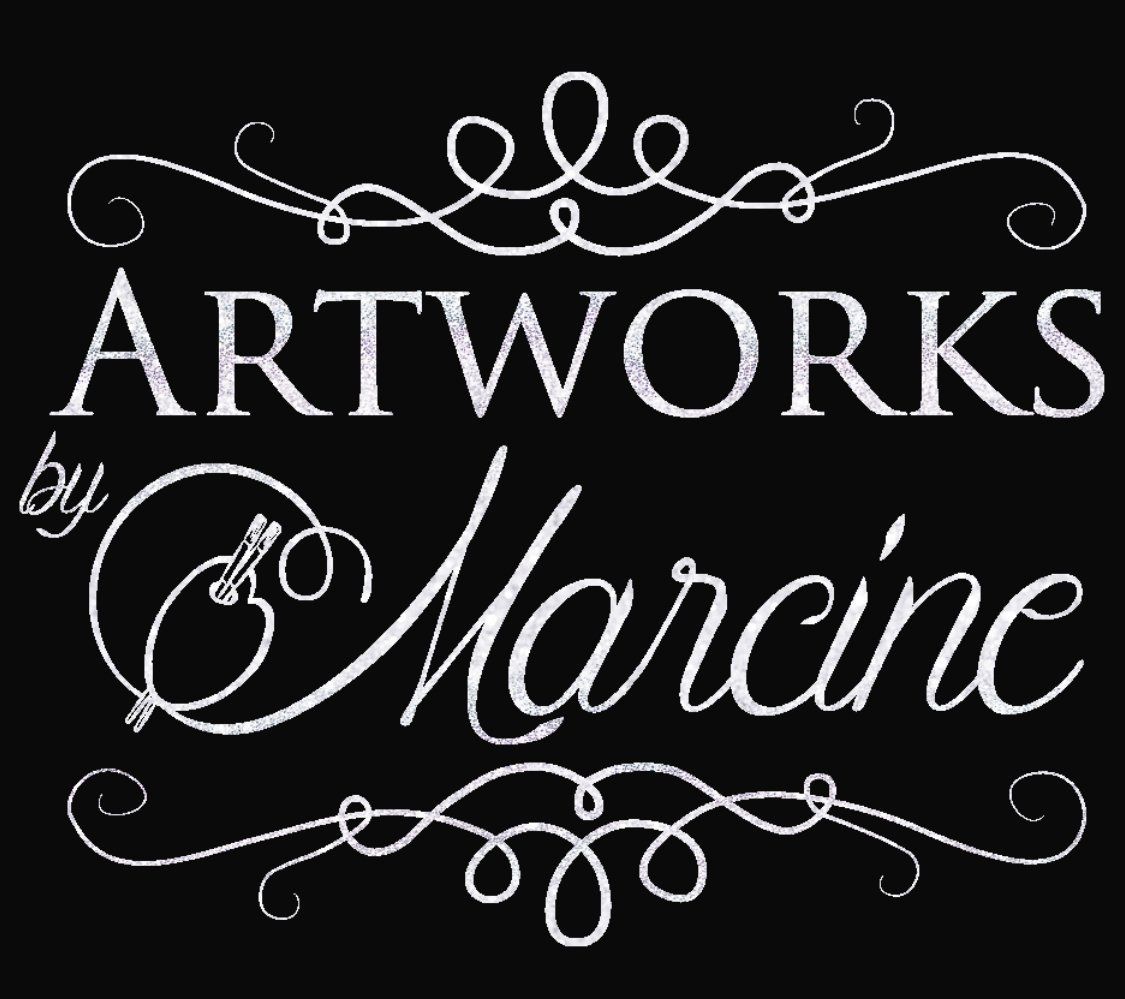Choosing The Right Paint Finish | Artworks By Marcine
Paint sheen is the level of shininess or reflectivity in a paint. Choosing the right paint finish, also known as the paint sheen, can be overwhelming; there’s so many different types. However, once you understand the limits of each sheen and where you’re going to use that sheen in your home or business, the selection process gets easier. Choosing the right paint finish relies on the answers to two questions: 1. How much gloss do you want, and, 2. Where are you painting that color? Since I use Benjamin Moore paints as my paint of choice, I will refer to them throughout this post.
These are the basic levels of sheen from no sheen to the highest level of sheen.
- flat
- matte
- eggshell
- pearl
- satin
- semi-gloss
- gloss
The higher the level of sheen, the more durable the paint is. Consequently, the higher the level of sheen, the higher the level of reflectiveness. High sheen paint such as Semi-gloss and gloss will show imperfections in surfaces.
Flat Paint
Flat paint has no sheen. It is perfect for ceilings. Flat paint absorbs the light. Because of lack of reflectivity, flat paint hides surface imperfections. However, you need to keep in mind that flat paint is less durable than the other sheens. The surface of flat paint is more porous meaning it will easily absorb dirt. It will even absorb oils from your hand. In this regard, flat paint difficult to clean. That said, flat paint is not recommended for high traffic areas or surfaces that will receive a lot of use.
Matte Paint
Matte paint is the next level of paint with a hint of sheen. If my clients want walls that are dull, Aura “Washable Matte” is my go to. Aura is a pricey paint, but I think you’ll find it is well worth the investment. The dry paint finish resembles velvet. It is washable. I personally think Aura has great coverage too and is a fantastic paint for painting in dark colors. Aura washable matte gives the best of both worlds in low sheen and washability.
Eggshell Paint
Eggshell paint is versatile. It does have a bit of a sheen and is considered a low luster finish. Eggshell finish may be an issue if you have walls with imperfections in them, or if you simply are not a fan of a slightly reflective surface. However, eggshell sheen paint is washable and is more durable. I use eggshell sheen for the base of my mural work and most of my faux finish work simply because the surface of the sheen allows for workability with the colors that are painted on top of it. There is enough “tooth” to the paint that the subsequent layers of paint or glaze will grab and not peel off.
Pearl Paint
Speaking from personal experience, I have never used Pearl Paint finish. I researched it on the Benjamin Moore website and the company describes this finish as “a medium gloss that maintains high durability…used for trim and walls in high-traffic areas.” Pearl paint is very close to satin.
Satin Paint
Satin Paint has a slightly higher sheen than eggshell. This finish, along with Pearl sheen, are considered in the medium sheen range.
From personal experience, many of the rooms I have worked in were painted in either eggshell or satin sheen.
Semi-gloss Paint
Semi-gloss paint has a high reflective sheen. It is commonly used for doors, base and crown molding because of its durability and cleanability. Semi-gloss paint can even be used for cabinetry.
Gloss Paint
Gloss paint has a highly reflective sheen. It is extremely durable and extremely washable. You can use gloss paint on surfaces which will get a great deal of use. Keep in mind that because of the high reflectivity, any imperfections in the surface will be easily noticeable.
Advice and Resources to Help With Choosing a Paint Finish
The best advice I can offer is to go to your local paint store. Explain what you plan on painting and if you like a shinier finish. The store representative will be able to help you choose the correct paint finish for your project.
There is also a an article written by Benjamin Moore, “How to Choose a Paint Finish.” It is on their website, www.benjaminmoore.com. You can read the article here.
There is also a chart showing the different Benjamin Moore sheens and their uses. You can view it here.
One last note: If you want to paint a lower sheen over a high sheen, you must sand the surface to give it a “tooth” or something to grab onto.
We have the best art expertise in our hands to provide services that suit your artistic needs perfectly.
Read more interesting articles in our BLOG.
Contact Us
(908) 599-2129
marcine@artworksbymarcine.com

OPENING HOURS
- Mon - Thu
- -
- Friday
- -
- Saturday
- -
- Sunday
- Closed